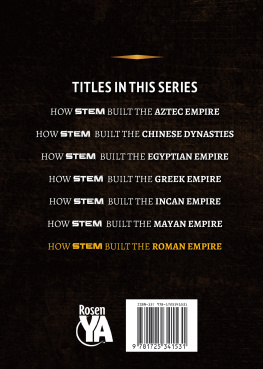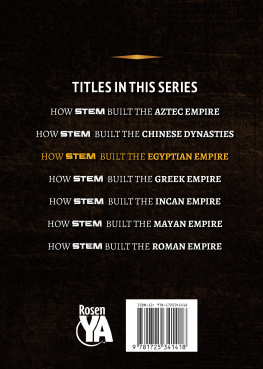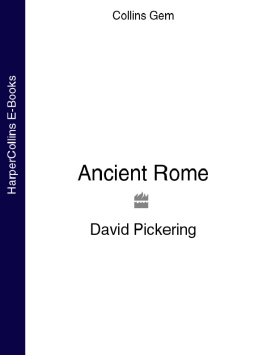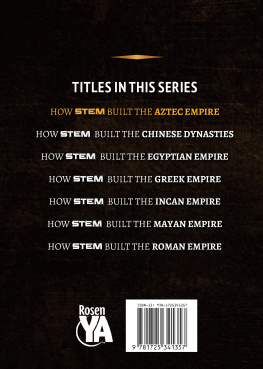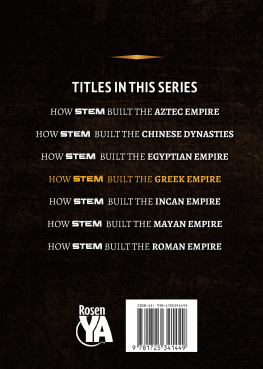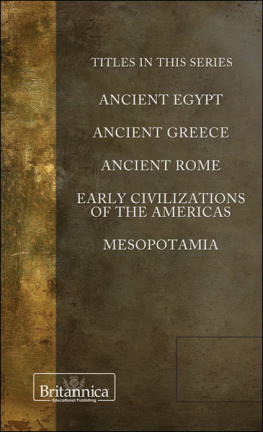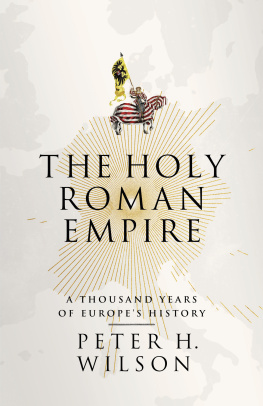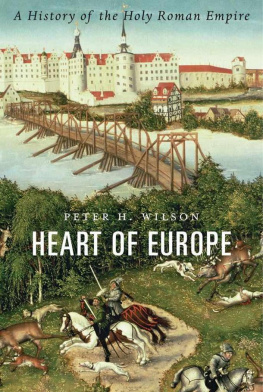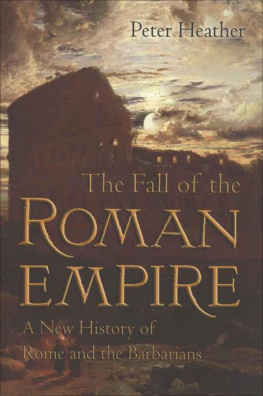
For Brandy and Dave, traveling companions in Rome and life itself
Published in 2020 by The Rosen Publishing Group, Inc.
29 East 21st Street, New York, NY 10010
Copyright 2020 by The Rosen Publishing Group, Inc.
First Edition
All rights reserved. No part of this book may be reproduced in any form without permission in writing from the publisher, except by a reviewer.
Library of Congress Cataloging-in-Publication Data
Names: Uhl, Xina M., author.
Title: How STEM built the Roman empire / Xina M. Uhl.
Description: First edition. | New York: Rosen Publishing,
2020. | Series: How STEM built empires | Includes
bibliographical references and index.
Identifiers: LCCN 2019015812| ISBN 9781725341531
(library bound) | ISBN 9781725341524 (pbk.)
Subjects: LCSH: BuildingRomeHistoryJuvenile literature. | TechnologyRomeHistoryJuvenile literature. | ScienceRomeHistoryJuvenile literature. | Science, AncientJuvenile literature. | RomeHistory Juvenile literature.
Classification: LCC T16 .U46 2020 | DDC 609.37dc23 LC record available at https://lccn.loc.gov/2019015812
Manufactured in the United States of America
On the cover: Among all of Romes incredible architecture, Roman aqueducts are perhaps the most iconic.
CONTENTS
INTRODUCTION
R ome is sometimes called the Eternal City for good reason. The ancient Romans established a republic in 509 BCE that lasted until the last emperor fell to invaders in 476 CE. Over its thousand-year history, Rome came to dominate the Mediterranean region, the Middle East, and Europe as far north as Britain, an area nearly 2 million square miles (5.18 million square kilometers) at its greatest extent in 117 CE. When the city of Rome was established, it had a population of only a few thousand. By the sixth century BCE, that number had grown to around twenty-five thousand. After another few centuriesaround 100 BCEbetween 1.5 million and two million slaves alone lived under Romes dominion. By 14 CE, the empires population had increased to nearly five million.
The ancient Romans took pride in their farming roots. As Roman statesman Cicero claimed in Ciceros Three Books of Offices: For of all gainful professions, nothing is better, nothing more pleasing, nothing more delightful, nothing better becomes a well-bred man than agriculture. Even at the height of Roman civilization, 80 percent of the people lived outside of cities in rural estates or small farms.
Romans believed that the occupation of farming made them honorable and strong. They took great pride in their citizenship, thinking of the family, the group, and the state above their individual needs and desires. More than anything, though, the average Roman was practical.
As admirers (and conquerors) of the Greeks who came before them, the Romans adopted many components of Greek culture, including their advances in science, technology, engineering, and mathematics (STEM). However, where the Greeks preferred to dwell on philosophy and theories of mathematics and science, the Romans had little interest in such practices. To the practical Romans, STEM had no value unless it could be applied to the physical world. For instance, what use was physics unless it could result in better catapults or other weapons of war? Why study biology unless it could improve crop yields or produce stronger, healthier breeds of livestock? Geometry and mathematics had little worth unless they could be used to build spectacular arches, domes, and other structures.
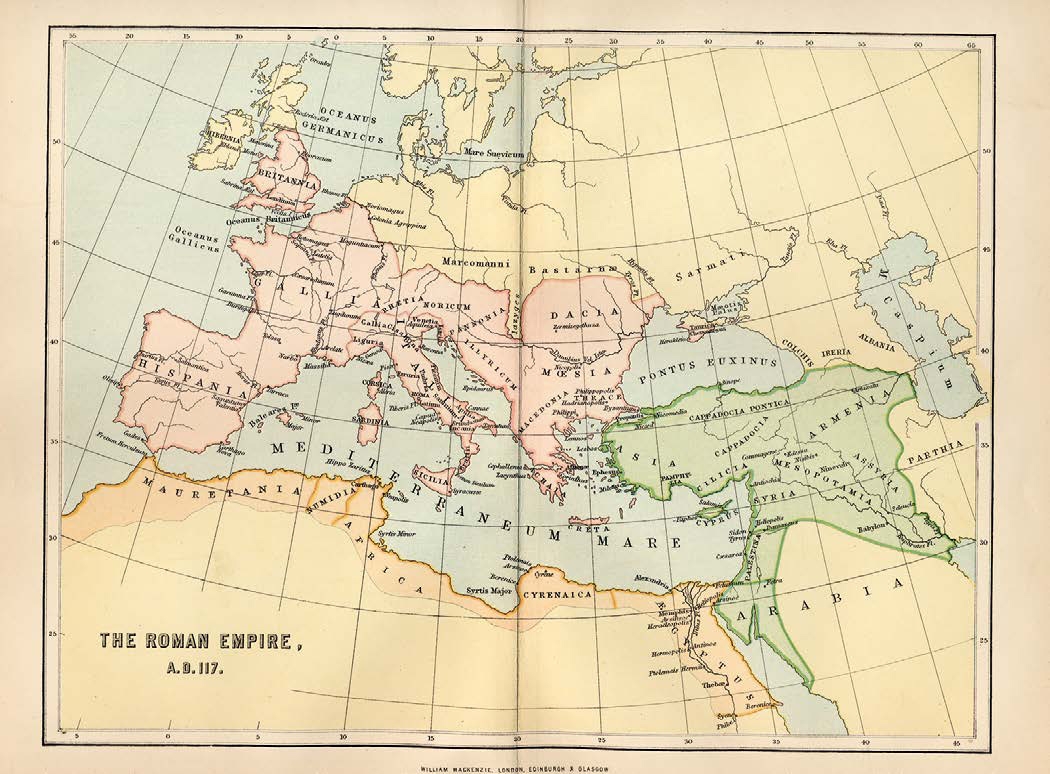
The Roman Empire reached its greatest extent in 117 CE under Emperor Trajan. Such immense conquest was possible only because of the best and brightest Roman STEM innovators.
To those ends, the Romans adopted Greek inventions and ideas and made them better and more useful. So impressed were the Romans with the Greeks knowledge and skills that they often used Greek slaves as tutors for their children. The earliest specialist doctors and architects in Rome were typically Greeks. Romans modified Greek examples in engineering, architecture, geometry, physics, biology, and medicine. These included techniques in mining and grain mills, use of clocks and counters, aqueducts to bring fresh water to cities for baths and drinking, medical practices that made use of numerous plant remedies to ease suffering, and even the use and refinements of machines to delight and entertain crowds in amphitheaters.
Roman scientists, engineers, mathematicians, architects, and others left a rich legacy for future generations. Many Roman roads, aqueducts, bridges, mills, and sources of knowledge about STEM still exist today as evidence of their brilliant achievements.
CHAPTER ONE

THE SOLDIERS
A pril 21, 753 BCE, is the traditional date for the founding of Rome. In the midst of seven hills near the Tiber River in central Italy, Rome began as a farming village. Italys first civilization, the Etruscans, conquered Rome around 600 BCE. Decades of strife followed, until the Romans overthrew the last of the Etruscan kings in 509 BCE and established the Roman Republic.
RISE AND FALL OF THE REPUBLIC
In the early days of the Roman Republic, Romes influence covered about 400 square miles (1,036 sq km) and included a population of about 150,000. Two consuls served as generals and shared duties as heads of the state. Aristocrats, called patricians, voted in assemblies and occupied the Senate to debate and make the laws. Commoners, called plebeians, had no role in government, though they did have some protections under law. After plebeians staged an uprising in the late fifth century BCE, they obtained more poweruntil, by 367 BCE, the class had won the right to fill one of the consular positions.
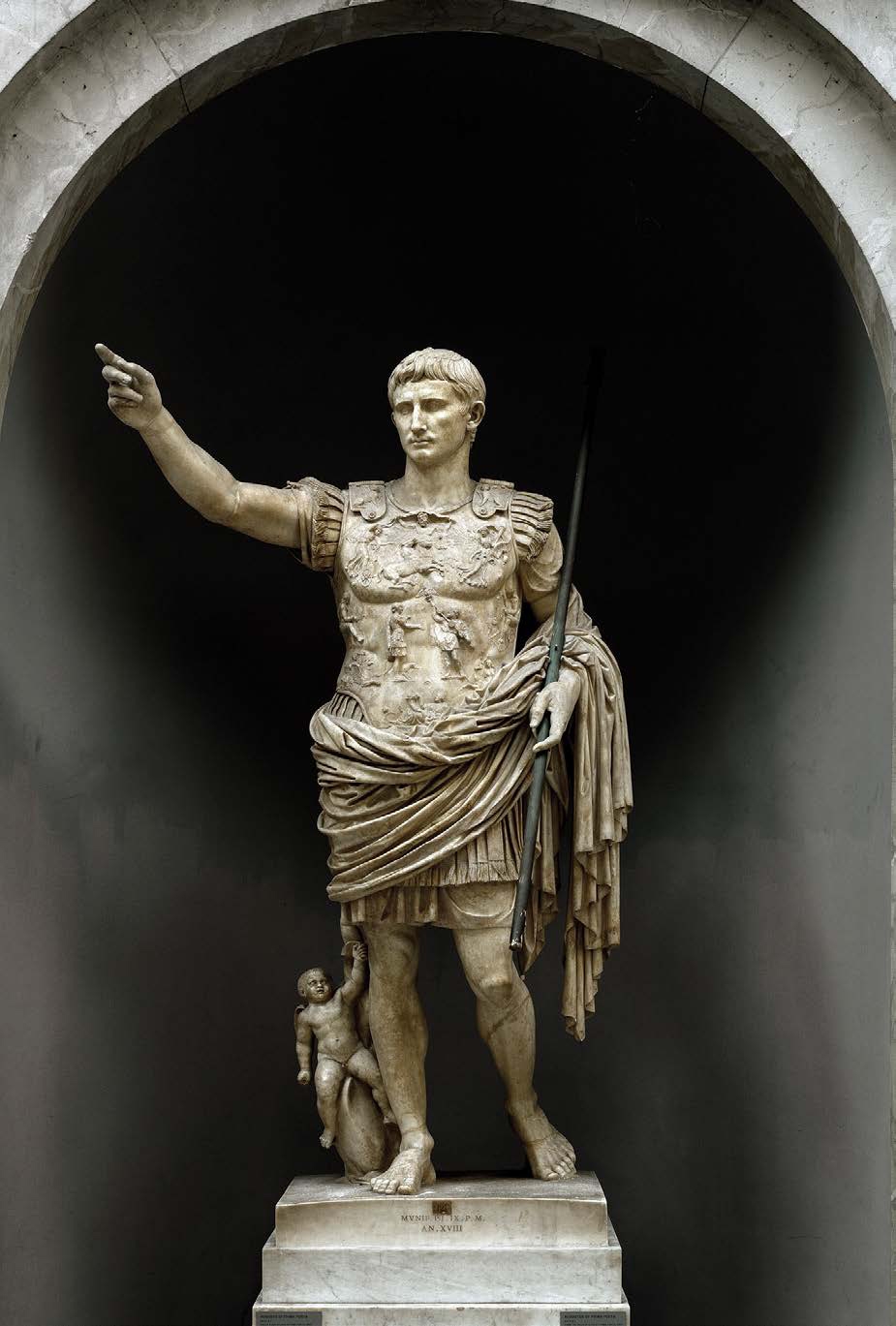
Augustus Caesar was the first Roman emperor. Many consider him the greatest of all the emperors. Augustus, born Octavian, was adopted by his great-uncle Julius Caesar, whom he eventually succeeded as emperor.
Hardy and determined, the Romans expanded throughout the Italian peninsula, seizing lands and consolidating their power. They defeated Greek colonies in Italy by 275 BCE. Their next rival, from Carthage in North Africa, required more than a century of wars before Rome emerged victorious in 146 BCE. Steadily, Rome expanded through areas in Sicily, Macedonia, Greece, Asia Minor (todays Turkey), and Spain. They took many slaves from conquered people, who labored on farms and in cities alike. Educated Greek slaves taught many Roman children and served the elite as scribes, bookkeepers, and in other positions. Rome adopted the Greek gods though they renamed themphilosophies, and scientific accomplishments.
All the while, Romes armies continued to march through western Europe. General Julius Caesar defeated the Gauls in a series of wars from 58 to 51 BCE. Rome took over rule of the Gallic lands in modern-day northern Italy, France, Luxembourg, Belgium, and Switzerland. Caesar then marched back to Rome and took over the government. His reign lasted until 44 BCE, when his political enemies assassinated him. After a period of civil war, Octavian was appointed emperor and changed his name to Augustus in 31 BCE. The republic was no more.
Next page
